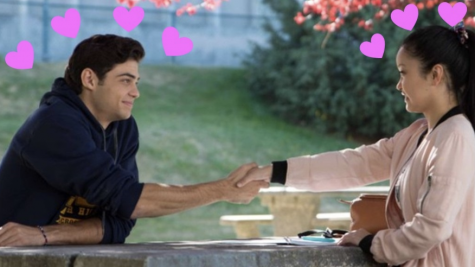Portrayal of High School: Media vs Reality
The entertainment industry produces films and TV shows that influence young adolescent’s perspectives on the ideal high school experience. Movies, such as Mean Girls, lead pre-teens to believe in a social hierarchy based on grade, looks, and wealth. On the other hand, High School Musical romanticized high school to be the experience of a lifetime. More recent depictions of high school include a more realistic student body. For example, the representation within the movie titled, “To All the Boys I’ve Loved Before,” considers the diversity usually found within secondary schools. These films may be entertaining, but continue to falsely represent true social and academic environments.
 Oftentimes films portray high school unrealistically and ignore much of what it actually entails. Films illustrate a social hierarchy, where multiple cliques are separated based on interest: the most common cliques being the “popular” group, the “jocks”, the “nerds,” and the theater kids. Although we are able to draw slight parallels between our reality and the one depicted within the shows we watch, it is clear in high school, the lines between social groups are blurred. In actuality, friend groups are less based on popularity, and there is more interaction between these “cliques”. Furthermore, the movie portrays high school students to primarily be occupied with high school parties and drama, but for most students, this is very unrealistic. The average American high schooler is usually doing homework for hours on end, with only weekends reserved for socializing and inevitably, more studying.
Oftentimes films portray high school unrealistically and ignore much of what it actually entails. Films illustrate a social hierarchy, where multiple cliques are separated based on interest: the most common cliques being the “popular” group, the “jocks”, the “nerds,” and the theater kids. Although we are able to draw slight parallels between our reality and the one depicted within the shows we watch, it is clear in high school, the lines between social groups are blurred. In actuality, friend groups are less based on popularity, and there is more interaction between these “cliques”. Furthermore, the movie portrays high school students to primarily be occupied with high school parties and drama, but for most students, this is very unrealistic. The average American high schooler is usually doing homework for hours on end, with only weekends reserved for socializing and inevitably, more studying.
The main contrast between the way high school is depicted and its reality is the time students commit to their academic and social life. The amount of free time students actually have is proportionally much smaller than what the media portrays. In movies such as High School Musical, students are rarely seen doing homework and are either pursuing after-school activities, spending time with friends, or going to high school parties. This provides young audiences with a very unrealistic portrayal of High School, as in reality, most students are consumed with homework, a part-time job, or school-related athletics. Thus, the media gives off the impression that high school is easy, simple, and carefree.
Middle schoolers are especially prone to believe in the “ideal” high school experience, but many students understand that the entertainment industry exaggerates this experience. An interview with Connor Tain [8] revealed that having older siblings can influence expectations, stating “I understand that high school will be really challenging. I’ve seen my older sister through her four years of high school, and I definitely expect it to be stressful.” Tain has watched shows like Spiderman and High school Musical that make him think that “people usually have isolated friend groups based on common interest and grade level.” Attending Oakton in the Fall, he hopes that “Oakton events, like football games, will be wild!”
An interview with Kirsten Clements clarifies the specifics of the current high school experience. She reveals that she had “thought seniors would ‘rule the school’, and there would be a lot of cliques.” In reality, Clements disproves this myth, explaining that “underclassmen don’t care about the upperclassman and the upperclassman don’t care about you.” To ease the concerns of incoming freshmen, Clements insists that “it’s not that hard to make friends, in movies there’s a lot of drama and wanting to fit in, but for me, and there isn’t that much drama unless you’re surrounding yourself with those people.” As a senior in high school, Clements asserts, “the media’s portrayal of high school gives kids the impression that they should act a certain way, for example, popular people should be mean and jocks should be egotistical. For the most part, people don’t act like that.” Her experience dispels ideas of the high school social environment typically portrayed in the media.


